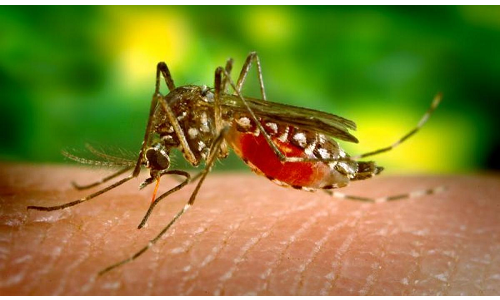A new study by Indian scientists confirm, there is an increase in the cases of severe malaria infections in India as against mild form of malaria found earlier. These were mostly found in middle and southwest coast of India. The researchers feel mixed infections pose a challenge since these are associated with severe malaria and proper treatment for these cases is not clearly defined.
Jabalpur, MP (ISW): A new study has confirmed there is an increase in the cases of severe malaria infections in India as against mild form of malaria found earlier.
India used to be mostly burdened with P. vivax (a mild form of malaria) cases but now there is an increasing number of P. falciparum (deadly form of malaria) cases. Researchers have also observed a high proportion of cases of mixed infections – infection of a patient by two or more species of malaria parasite.
Malaria spreads through female Anopheles mosquito and is caused by one of the four different species (or types) of Plasmodium parasite – P. falciparum, P. malariae, P. ovale and P. vivax in humans. Of them, infection with P. falciparum causes fatal form of malaria whereas P. vivax results in mild cases.
Scientists at National Institute for Research in Tribal Health, Jabalpur and their collaborators mapped the burden of different malaria infections all over India in an effort to understand changes in the distribution of malaria cases. They collected blood samples from over 2300 patients having malaria like symptoms from 11 different geographical locations. Standard malaria tests routinely available at primary health care centers were used, along with more sensitive PCR analysis which identifies genetic material of parasite.
The research group has published its results in scientific journal, PloS One recently. In addition, they collated data from publications over the past 13 years to analyze differential infection of malaria parasites based on PCR diagnostic test. “India is planning for malaria elimination by 2030. But a shift in malaria occurrence is really daunting for targeted malaria elimination,” said Prof. Aparup Das, who led the research.
Out of the positive malaria infections, 13% were found to be mixed infections due to P. falciparum and P. vivax. These were mostly located in middle and southwest coast of India. The researchers feel mixed infections to be another challenge since these are associated with severe malaria and proper treatment for these cases is not clearly defined.
Prof. Das expressed concern over emerging threat of another species of malaria- P. malariae. “Earlier it was confined to Odisha but our analyses suggest that it is spreading to all over India and there are no defined treatment guidelines, nor diagnosis in the field for this species.”
“Considerable mixed malaria cases are reported, though not precisely due to technical and methodological challenges. The malaria elimination and treatment guideline can be evaluated using such information and apprised to halt or delay the development of more resistant strains” commented Dr. Abhinav Sinha, a senior scientist at the National Institute of Malaria Research, Delhi, who was not connected with the study.
Larger studies have been planned for better understanding of the challenge, said Prof. Das. He said, this will reveal the real epidemiology of malaria and form a basic understanding by which different control measures could be undertaken.


